Advertisements
Advertisements
प्रश्न
An object is placed in front of a converging lens and in front of a diverging lens as in fig.

(a)Complete the ray diagram to obtain an image.
(b)Compare the nature of image formed by both the lenses in the above case.
उत्तर
(a)
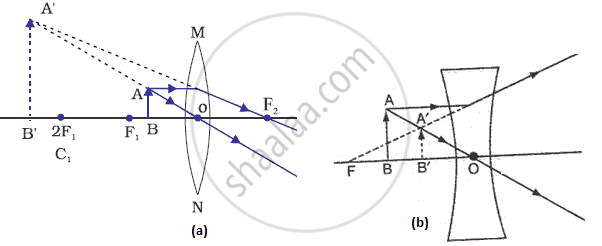
(b) In both the cases the image formed is virtual, upright and on the same side of the lens but the image formed by a convex lens is magnified and that formed by a concave lens is diminished.
APPEARS IN
संबंधित प्रश्न
Study the following diagrams in which the path of a ray of light passing through a glass prism as traced by four students P, Q, R and S is shown:
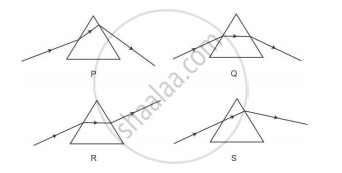
The student who has traced the path correctly is
(A) P
(B) Q
(C) R
(D) S
In the following ray diagram the correctly marked angle are:
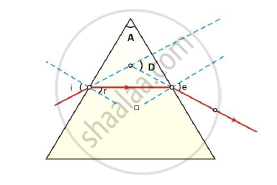
(a) ∠i and ∠e
(b) ∠A and ∠D
(c) ∠i, ∠e and ∠D
(d) ∠r, ∠A and ∠D
What is spectrum? What is the name of glass shape used to produce a spectrum?
When white light passes through a prism, it ............
The diagram below shows the path taken by a narrow beam of yellow monochromatic light passing through an equiangular glass prism. If the yellow light is replaced by a narrow beam of white light incident at the same angle, draw another diagram to show the passage of white light through the prism and label it to show the effect of prism on the white light.
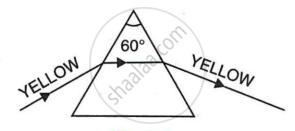
What do you understand by the term spectrum?
Draw a labeled ray diagram to illustrate the dispersion of a narrow beam of white light when it passes through a glass prism.
In the figure, a beam of light consisting of three colours blue, red, and yellow is incident on a prism and on a rectangular glass block respectively. Complete the diagram by drawings of the refracted and emergent rays.
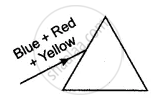
Define dispersion of light.
